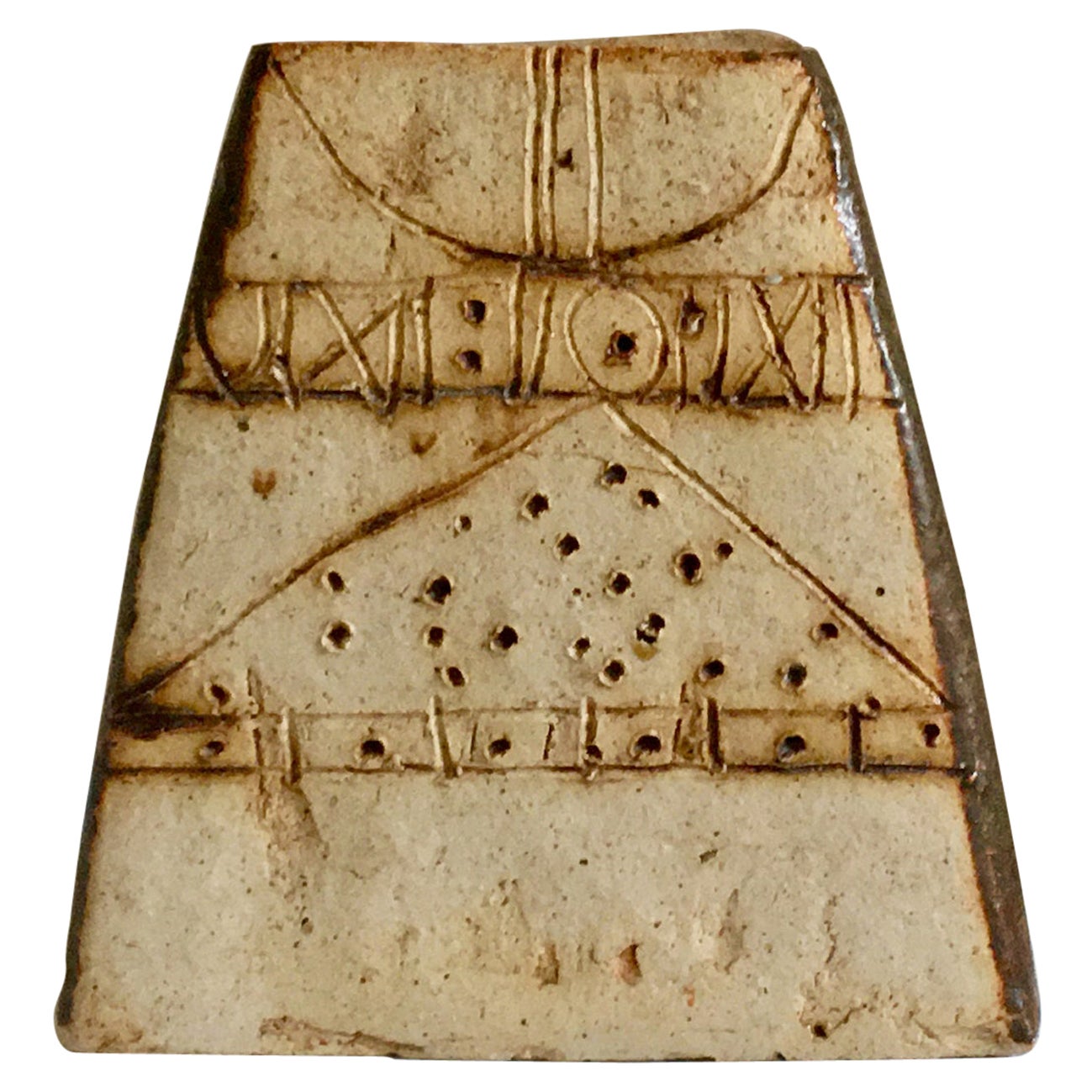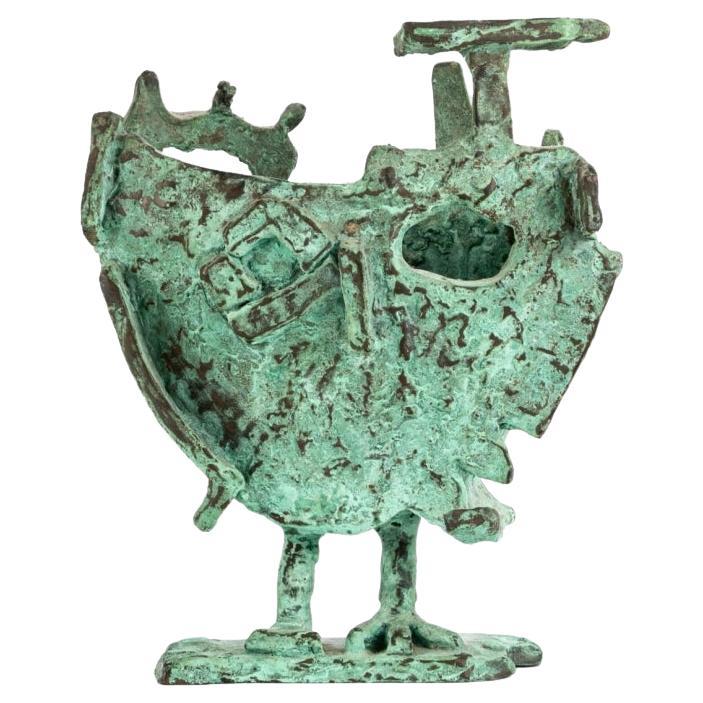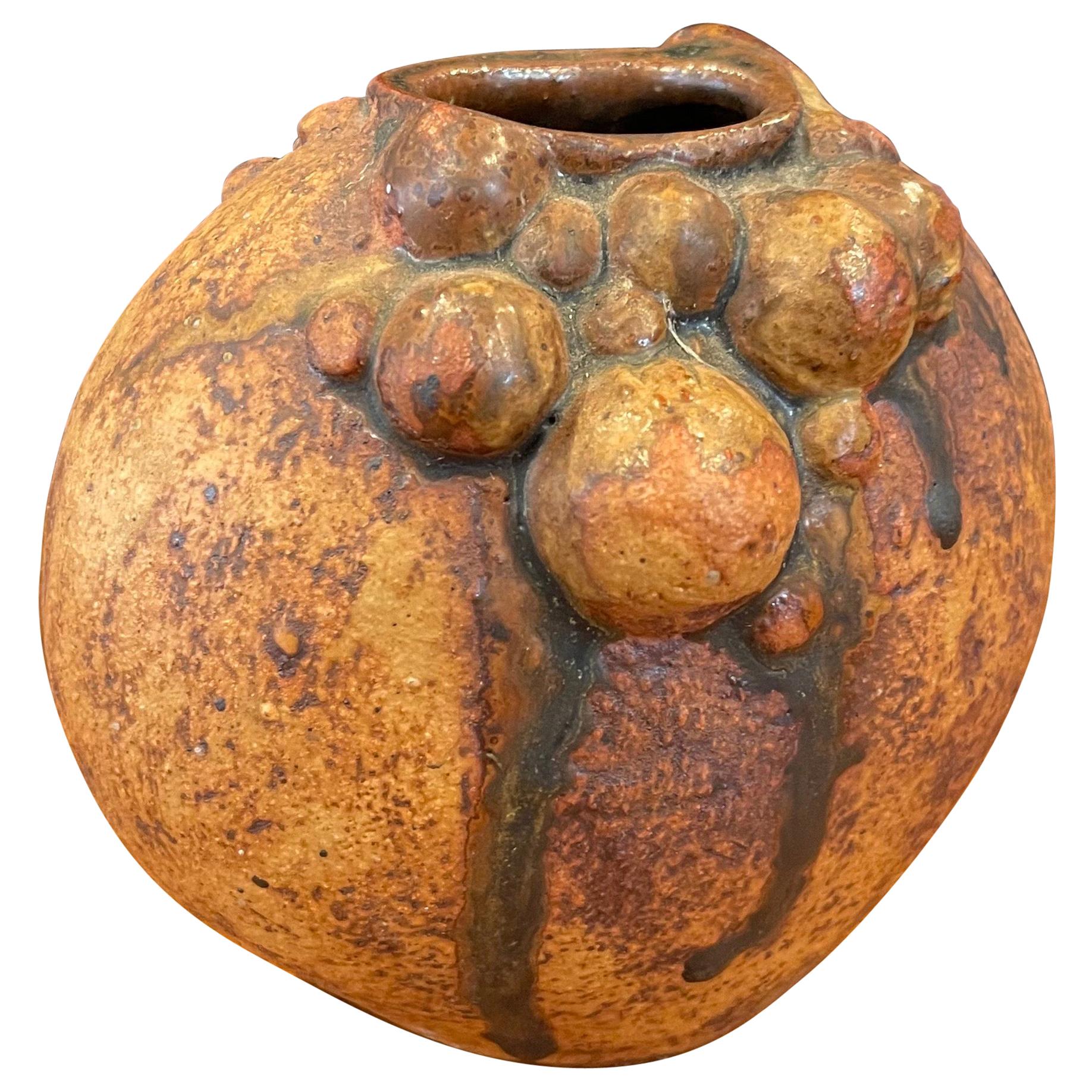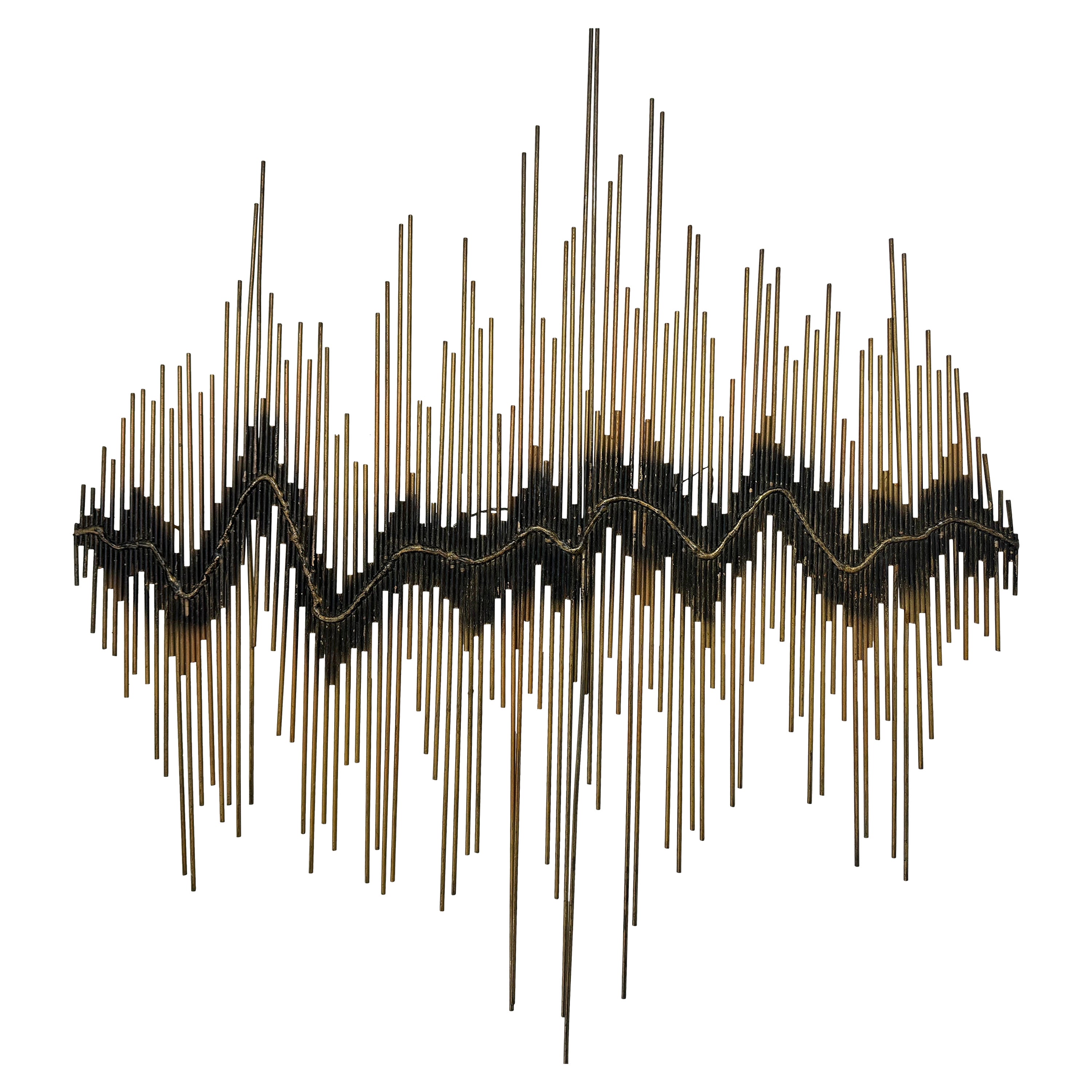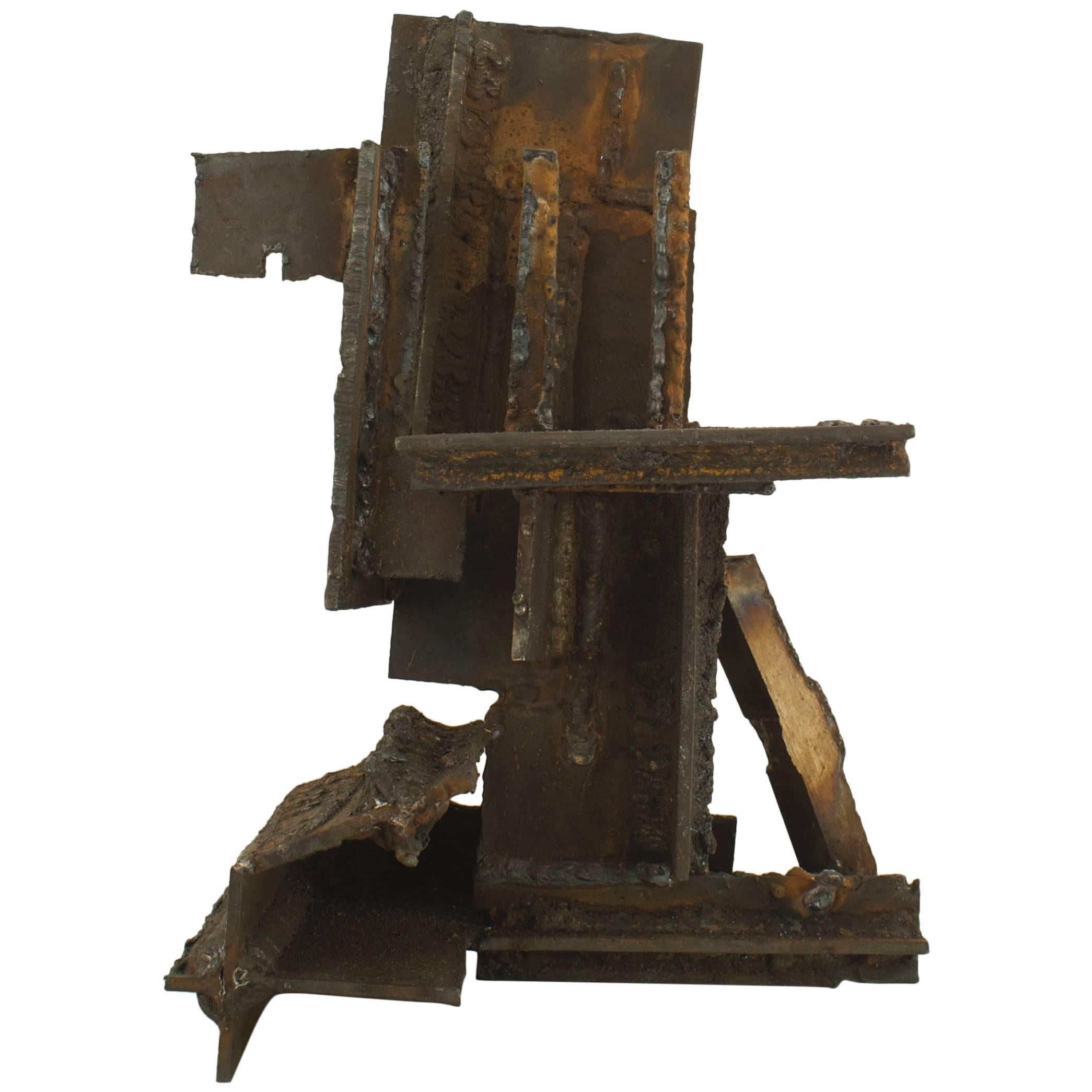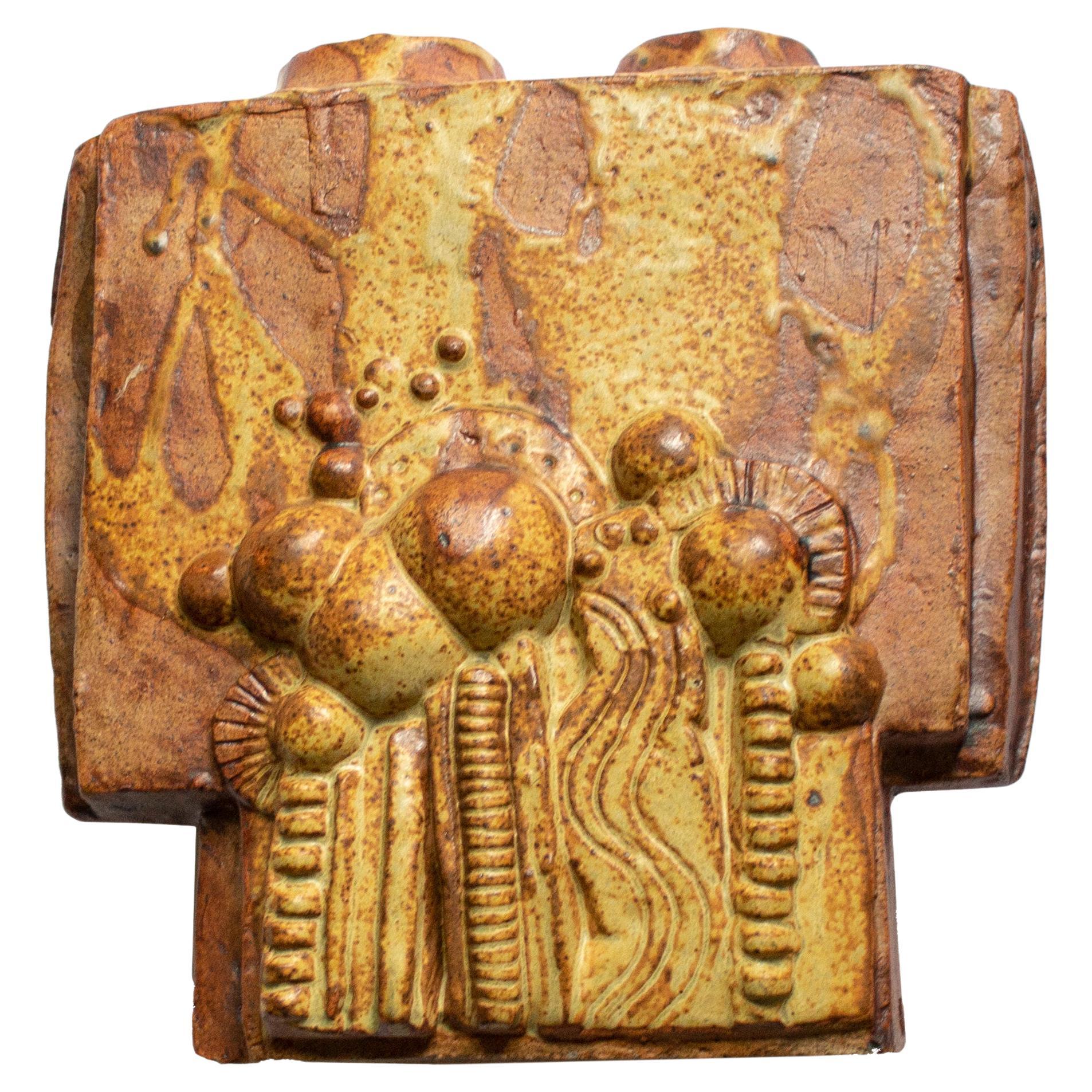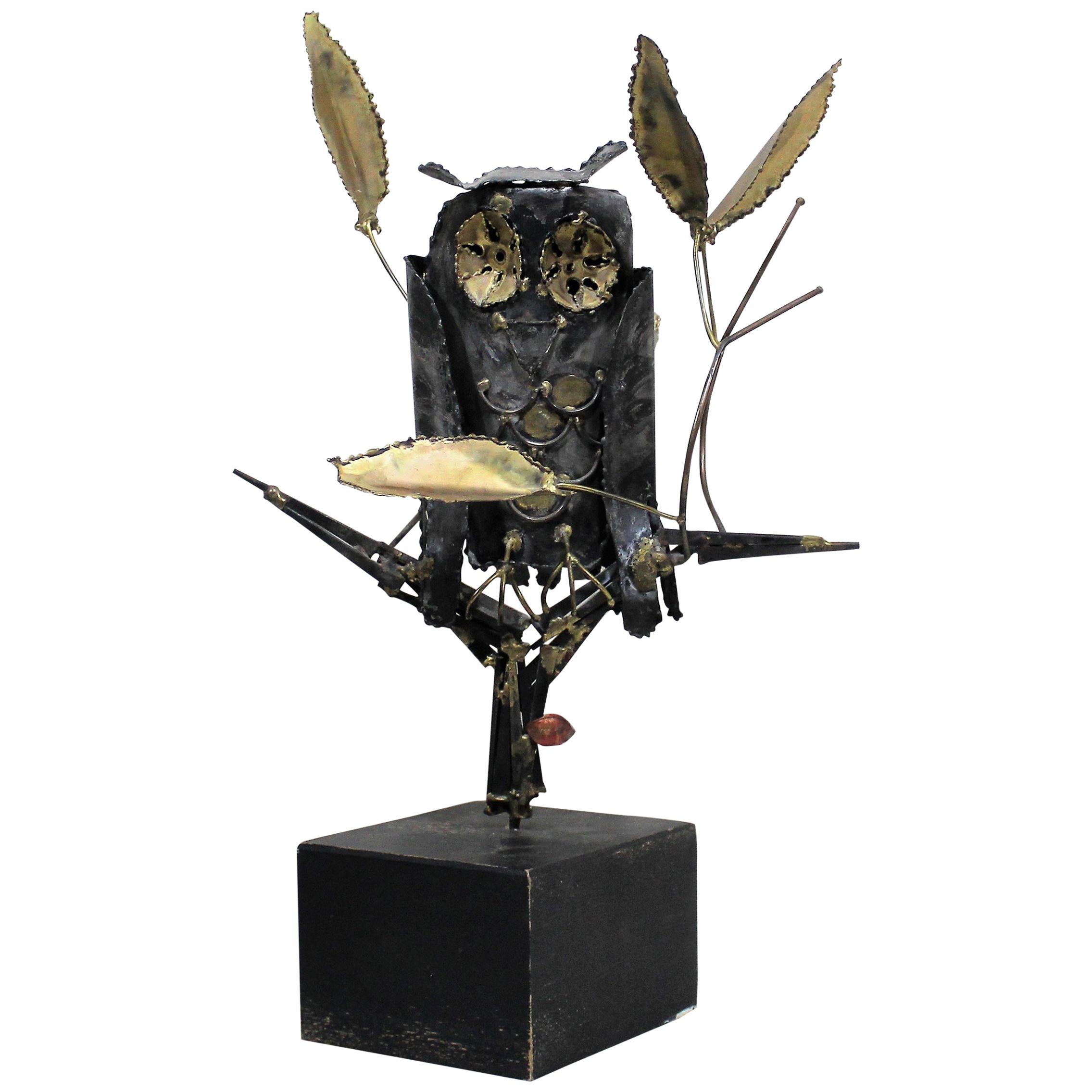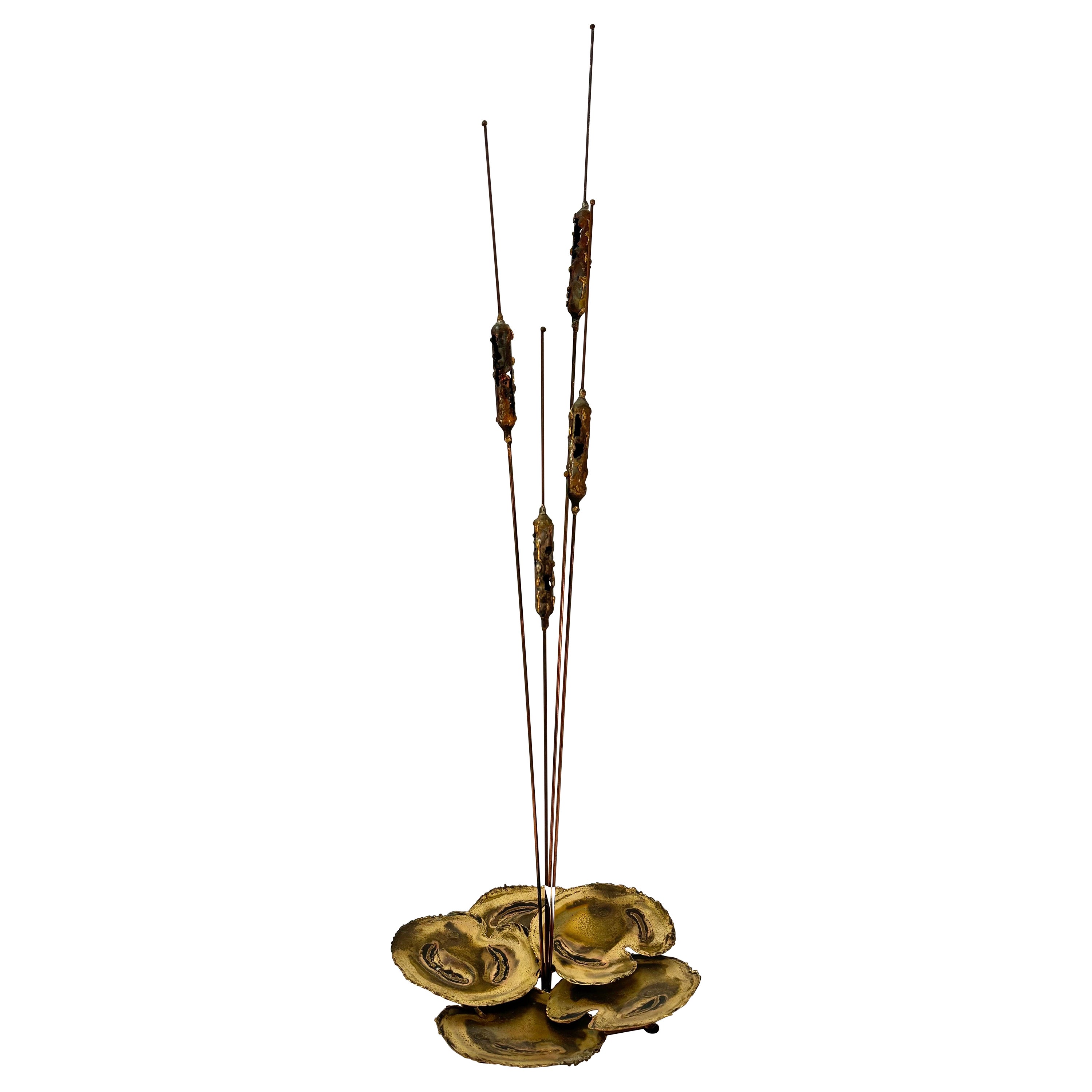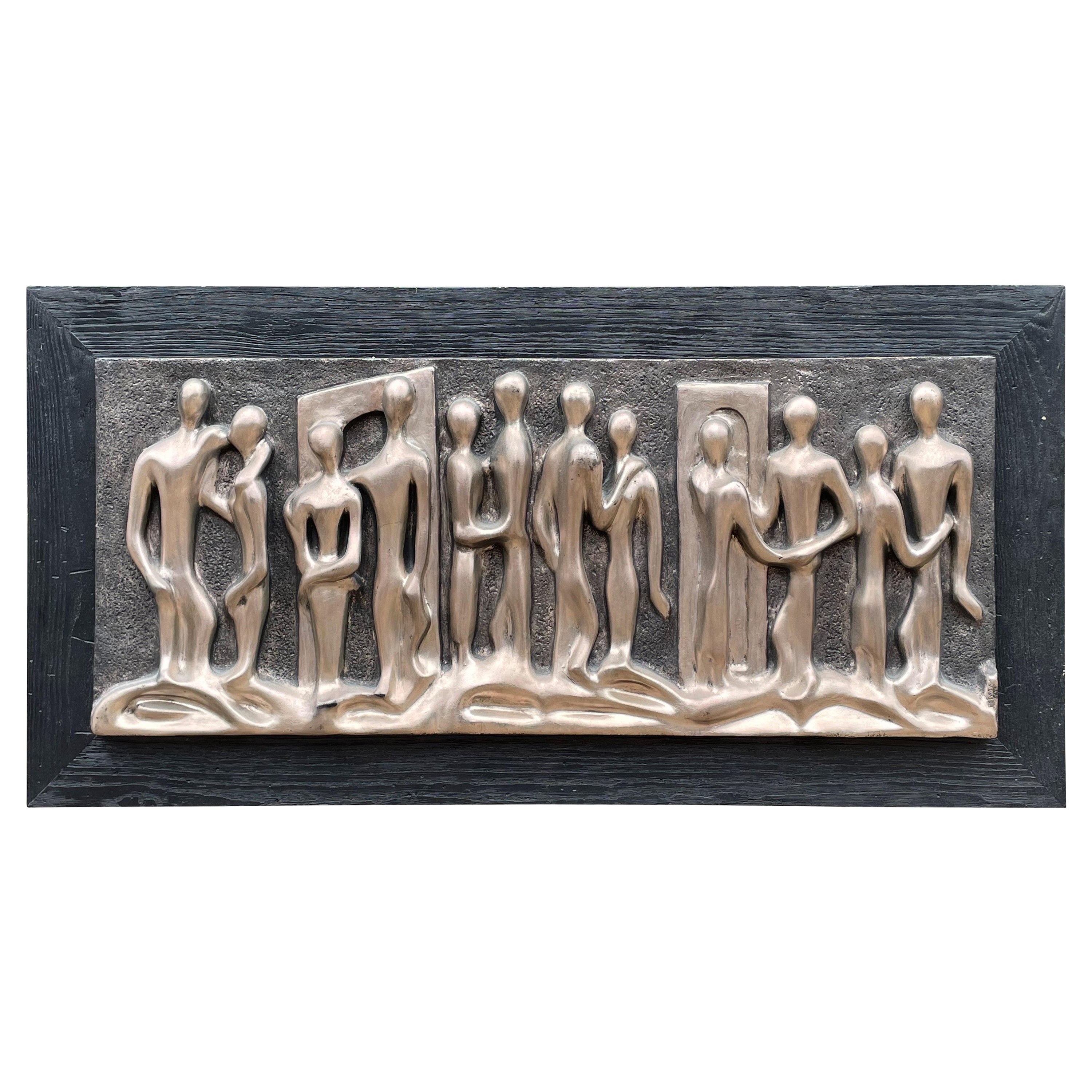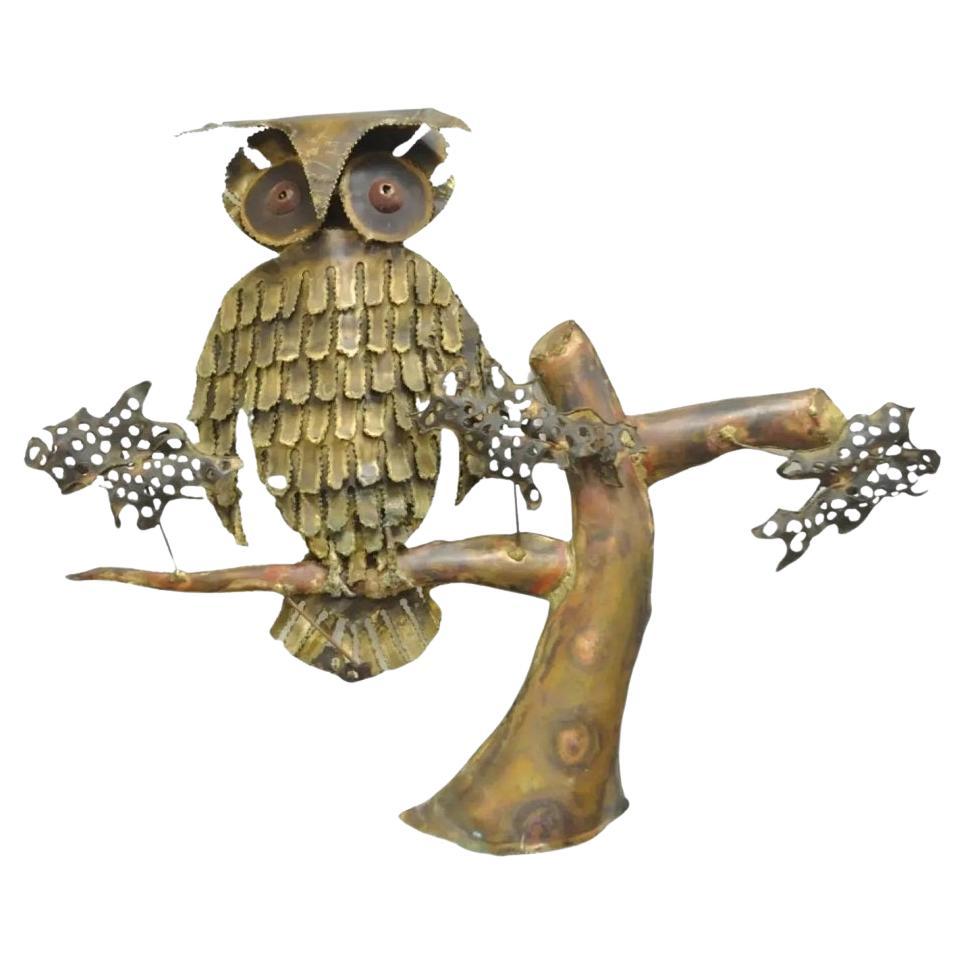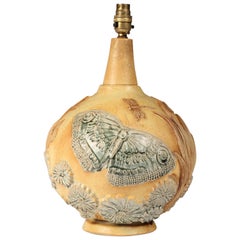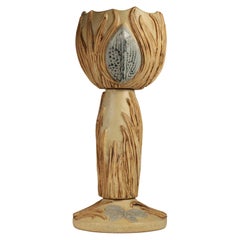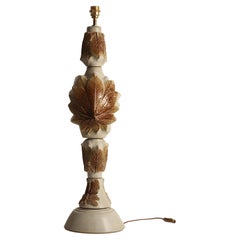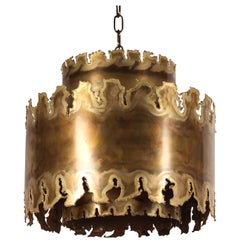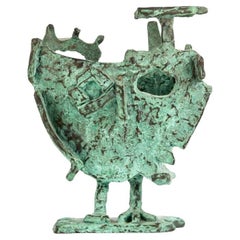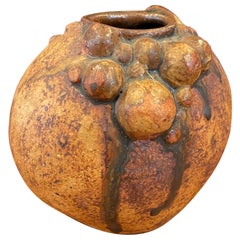
Mid-Century Modern Brutalist Animal Sculpture of a Ceramic Owl by Bernard Rooke
View Similar Items
Want more images or videos?
Request additional images or videos from the seller
1 of 18
Mid-Century Modern Brutalist Animal Sculpture of a Ceramic Owl by Bernard Rooke
About the Item
- Creator:Bernard Rooke (Maker)
- Dimensions:Height: 18.71 in (47.5 cm)Width: 7.88 in (20 cm)Depth: 6.7 in (17 cm)
- Style:Brutalist (Of the Period)
- Materials and Techniques:
- Place of Origin:
- Period:
- Date of Manufacture:1960s
- Condition:Signed BR to the base.
- Seller Location:London, GB
- Reference Number:1stDibs: LU2868316368012
About the Seller
5.0
Platinum Seller
Premium sellers with a 4.7+ rating and 24-hour response times
Established in 2015
1stDibs seller since 2017
182 sales on 1stDibs
Typical response time: 2 hours
Authenticity Guarantee
In the unlikely event there’s an issue with an item’s authenticity, contact us within 1 year for a full refund. DetailsMoney-Back Guarantee
If your item is not as described, is damaged in transit, or does not arrive, contact us within 7 days for a full refund. Details24-Hour Cancellation
You have a 24-hour grace period in which to reconsider your purchase, with no questions asked.Vetted Professional Sellers
Our world-class sellers must adhere to strict standards for service and quality, maintaining the integrity of our listings.Price-Match Guarantee
If you find that a seller listed the same item for a lower price elsewhere, we’ll match it.Trusted Global Delivery
Our best-in-class carrier network provides specialized shipping options worldwide, including custom delivery.More From This Seller
View AllMid-Century Modern Brutalist Ceramic Table Lamp by Bernard Rooke
By Bernard Rooke
Located in London, GB
An organic and Brutalist style Butterly table lamp. No chips or cracks. Easily retired for all regions.
Bernard Rooke (born 1938) is a British artist and studio potter. Rooke has exhibited his "Brutalist" ceramics and painting both in the UK and abroad with work in many collections both public and private including the Victoria and Albert Museum, Cleveland Museum of Art, Nuffield Foundation, Röhsska Museum in Sweden and the Trondheim Kunstmuseum in Norway.
Bernard Rooke attended Ipswich School of Art studying painting and lithography before going on to study at Goldsmiths College of Art. It was while studying here that he decided to take up pottery. Although unfamiliar with this craft and tradition, he found that working with clay provided new opportunities for freedom of interpretation and creativity.
In 1960 Rooke set up his first pottery in Forest Hill in South London along with Alan Wallwork. It was a very small room with enough space for a small electric kiln. He was initially using mainly hand building, coiling, blocking and slabbing techniques. While researching ideas, he was supporting himself by part-time lecturing at London University, Goldsmiths College and St Mary's College. In addition, Rooke's membership of 'The Craftsman Potters' Association' enabled him to show his work in a shop in Carnaby Street in London.
In 1967, both the need for a larger working space and becoming disillusioned with living in London spurred Rooke into moving out of the city and to an old mill building in Swilland in Suffolk. Rooke wanted to widen the range of work so as to become more commercial. With the birth of his son, Aaron, and much needed work to be done on the mill, it was important to be able to make a living.
In 1968, the Grand Metropolitan Hotel commissioned Rooke to make 120 standard lamps, 120 table lamps as well as a 24 foot long ceramic mural and another 9 foot high, which incorporated interior lighting. The money from the commission helped to pay for much needed restoration work on the mill.
By the 1970s, a gallery space was opened in the windmill and run by Susan Rooke, Bernard's wife, selling work to locals and tourists as well as to American airmen based nearby. The vision for Mill Gallery was beginning to develop and alongside this a reputation was building bringing in a good source of income.
Sons Aaron and Felix were becoming more involved with the running of the pottery, giving Bernard more time to develop new ideas and designs and more time to continue with his painting. In 2004, the Rooke family decided not to sell to the public through the gallery anymore and close the pottery to concentrate more on painting and printmaking.
In 2017 Bernard's lighting was featured in the Exhibition: “Glass, Light, Paint & Clay” at the Peterborough Museum and Art Gallery. The exhibition featured four artists: Bernard Rooke, John Maltby...
Category
Vintage 1970s English Brutalist Table Lamps
Materials
Clay
Mid Century Modern Ceramic Jardinière by Bernard Rooke
By Bernard Rooke
Located in London, GB
An organic and Brutalist style Jardine which would work perfectly with trailing foliage.
Bernard Rooke (born 1938) is a British artist and studio potter. Rooke has exhibited his "Brutalist" ceramics and painting both in the UK and abroad with work in many collections both public and private including the Victoria and Albert Museum, Cleveland Museum of Art, Nuffield Foundation, Röhsska Museum in Sweden and the Trondheim Kunstmuseum in Norway.
Bernard Rooke attended Ipswich School of Art studying painting and lithography before going on to study at Goldsmiths College of Art. It was while studying here that he decided to take up pottery. Although unfamiliar with this craft and tradition, he found that working with clay provided new opportunities for freedom of interpretation and creativity.
In 1960 Rooke set up his first pottery in Forest Hill in South London along with Alan Wallwork. It was a very small room with enough space for a small electric kiln. He was initially using mainly hand building, coiling, blocking and slabbing techniques. While researching ideas, he was supporting himself by part-time lecturing at London University, Goldsmiths College and St Mary's College. In addition, Rooke's membership of 'The Craftsman Potters' Association' enabled him to show his work in a shop in Carnaby Street in London.
In 1967, both the need for a larger working space and becoming disillusioned with living in London spurred Rooke into moving out of the city and to an old mill building in Swilland in Suffolk. Rooke wanted to widen the range of work so as to become more commercial. With the birth of his son, Aaron, and much needed work to be done on the mill, it was important to be able to make a living.
In 1968, the Grand Metropolitan Hotel commissioned Rooke to make 120 standard lamps, 120 table lamps as well as a 24 foot long ceramic mural and another 9 foot high, which incorporated interior lighting. The money from the commission helped to pay for much needed restoration work on the mill.
By the 1970s, a gallery space was opened in the windmill and run by Susan Rooke, Bernard's wife, selling work to locals and tourists as well as to American airmen based nearby. The vision for Mill Gallery was beginning to develop and alongside this a reputation was building bringing in a good source of income.
Sons Aaron and Felix were becoming more involved with the running of the pottery, giving Bernard more time to develop new ideas and designs and more time to continue with his painting. In 2004, the Rooke family decided not to sell to the public through the gallery anymore and close the pottery to concentrate more on painting and printmaking.
In 2017 Bernard's lighting was featured in the Exhibition: “Glass, Light, Paint & Clay” at the Peterborough Museum and Art Gallery. The exhibition featured four artists: Bernard Rooke, John Maltby...
Category
Vintage 1970s English Brutalist Planters and Jardinieres
Materials
Clay
Bernard Rooke Brutalist Dragon Fly and Leaf Floor Lamp Organic Style 1960-1970
By Bernard Rooke
Located in London, GB
An organic and Brutalist style Floor Lamp with Dragon Fly and Leaf design. No chips or cracks. Easily rewired for all regions.
Bernard Rooke (born 1938) is a British artist and studio potter. Rooke has exhibited his "Brutalist" ceramics and painting both in the UK and abroad with work in many collections both public and private including the Victoria and Albert Museum, Cleveland Museum of Art, Nuffield Foundation, Röhsska Museum in Sweden and the Trondheim Kunstmuseum in Norway. Bernard Rooke attended Ipswich School of Art studying painting and lithography before going on to study at Goldsmiths College of Art. It was while studying here that he decided to take up pottery. Although unfamiliar with this craft and tradition, he found that working with clay provided new opportunities for freedom of interpretation and creativity. In 1960 Rooke set up his first pottery in Forest Hill in South London along with Alan Wallwork. It was a very small room with enough space for a small electric kiln. He was initially using mainly hand building, coiling, blocking and slabbing techniques. While researching ideas, he was supporting himself by part-time lecturing at London University, Goldsmiths College and St Mary's College. In addition, Rooke's membership of 'The Craftsman Potters' Association' enabled him to show his work in a shop in Carnaby Street in London. In 1967, both the need for a larger working space and becoming disillusioned with living in London spurred Rooke into moving out of the city and to an old mill building in Swilland in Suffolk. Rooke wanted to widen the range of work so as to become more commercial. With the birth of his son, Aaron, and much needed work to be done on the mill, it was important to be able to make a living. In 1968, the Grand Metropolitan Hotel commissioned Rooke to make 120 standard lamps, 120 table lamps as well as a 24 foot long ceramic mural and another 9 foot high, which incorporated interior lighting. The money from the commission helped to pay for much needed restoration work on the mill. By the 1970s, a gallery space was opened in the windmill and run by Susan Rooke, Bernard's wife, selling work to locals and tourists as well as to American airmen based nearby. The vision for Mill Gallery was beginning to develop and alongside this a reputation was building bringing in a good source of income. Sons Aaron and Felix were becoming more involved with the running of the pottery, giving Bernard more time to develop new ideas and designs and more time to continue with his painting. In 2004, the Rooke family decided not to sell to the public through the gallery anymore and close the pottery to concentrate more on painting and printmaking. In 2017 Bernard's lighting was featured in the Exhibition: “Glass, Light, Paint & Clay” at the Peterborough Museum and Art Gallery. The exhibition featured four artists: Bernard Rooke, John Maltby...
Category
Vintage 1960s English Brutalist Floor Lamps
Materials
Pottery
Mid-Century Modern Brutalist Pendant Light by Svend Aage Holm Sørensen, 1960’s
By Holm Sørensen, Svend Aage Holm Sørensen
Located in London, GB
Danish designer Svend Aage Holm Sørensen (1913-2004) is known for his self-produced lighting designs dating from the 1950s, ‘60s and ‘70s. Despite the desirability of his designs on the vintage market, there is a lack of biographical information on the designer and his eponymous manufacturing company.
The Danish designer Svend Aage Holm-Sørensen (1913-2004) possessed an artist eye and a very good understanding of the potential of materials, and he understood how to innovate with these. To this day, Holm-Sørensen's style as a designer addresses not only the Nordic market, but also the international interest in the designer's distinctive and experimental expression. Sven Aage was known for being able to draw sketches on almost everything: envelopes, theater programs, even tram tickets he used to sketch his vision.
It is speculated that Holm Sørensen designed lights for well-known Danish lighting manufacturers Fog & Mørup and Lyfa in the 1950s, before establishing his own lighting company, Holm Sørensen A/S to produce and distribute his own designs.
Holm Sørensen’s style varies greatly, with designs from the 1950s truly reflecting the mid-century modern lighting style, with clear influences from the De Stijl and Bauhaus movements. His attenuated floor and table lamps contain the classic tri-pod base that was popular at the time, referencing such designs as H. Th. J. A. Busquet’s Pinocchio Lamp (1954).
From the 1960s onwards, Holm Sørensen’s style changed utterly. His designs diverged from colorful, geometric table lamps and floor lamps, to pendants with raw finished brass and copper surfaces. These pendant lamps showcase Holm Sørensen’s interpretation of the Brutalist style, which was popular from the 1950s to the mid-70s. Originally coined by the Swedish architect Hans Asplund...
Category
Vintage 1960s Danish Brutalist Chandeliers and Pendants
Materials
Brass
Pair of Large English Ceramic Cavalier King Charles Spaniels Staffordshire Style
By Staffordshire
Located in London, GB
A large pair of English Staffordshire style ceramic figures of orange and white seated spaniel dogs with gold chain leashes.
Their two front legs are separated, a more delicate, ther...
Category
20th Century British Victorian Animal Sculptures
Materials
Ceramic
Gem Grade Amethyst Geode Sculpture, Uruguay
Located in London, GB
This Gem grade, Amethyst Geode crystal Sculpture, resembles in shape and silhouette that of a shrouded woman holding a swaddled baby. And would work well in a Boho Chic Styled Interior. The Geode originates from Uruguay where they are mined from the same rock formation as their relatives just to the north across the border into southern Brazil, they are igneous (volcanic) in origin.
Differentiated from its Brazilian relatives by it’s typically smaller crystal size and darker, deeper colour the Uruguayan amethyst...
Category
Antique 15th Century and Earlier Uruguayan Organic Modern Natural Specimens
Materials
Amethyst
You May Also Like
Monumental Brutalist Owl, Mid-Century Modern, Italy
By Curtis Jeré
Located in Buffalo, NY
Wonderful Brutalist owl sculpture, handmade, copper and brass, modernist, signed Italy.
Category
Mid-20th Century Italian Brutalist Animal Sculptures
Materials
Brass, Copper
Ceramic Vessel by Bernard Rooke, Mid-20th Century, England
By Bernard Rooke
Located in London, GB
Mid-20th century ceramic vessel in neutral tones, by British artist Bernard Rooke.
The vessel has a trapezoidal shape decorated with hieroglyphics front and back, and glazed to the ...
Category
20th Century British Mid-Century Modern Vases
Materials
Ceramic
Mid-Century Norma Flanagan Brutalist Bronze Owl Sculpture
Located in Bridgeport, CT
A very well crafted Brutalist patinated bronze Owl with Vessel form by multi-disciplinary artist Norma Flanagan. The influences on the bronze are many and the piece is at once reminiscent of Picasso, Diego Giacometti and Ancient Roman Bronzes. Thick walled bronze...
Category
Mid-20th Century American Brutalist Animal Sculptures
Materials
Bronze
Brutalist Earthenware Pottery Vase by Bernard Rooke
By Bernard Rooke
Located in San Diego, CA
A very nice Brutalist earthenware pottery vase by Bernard Rooke, circa 1970s. The piece is in very good vintage condition with no chips, cracks or crazing and measures 5.5" W x 4" D ...
Category
Mid-20th Century American Mid-Century Modern Vases
Materials
Earthenware
$380 Sale Price
20% Off
Mid Century Modern Brutalist Wall Sculpture
Located in Redding, CT
Mid Century Modern Brutalist Wall Sculpture. Perfect for above a Mid Century sofa or credenza. Nice statement piece.
Category
Vintage 1960s Brutalist Abstract Sculptures
Materials
Metal, Copper
Mid-Century Modern Brutalist Steel Sculpture
Located in Queens, NY
American Mid-Century Modern Brutalist sculpture of tortured and burnt welded steel.
Category
Mid-20th Century American Brutalist Abstract Sculptures
Materials
Steel
Recently Viewed
View AllMore Ways To Browse
Brutalist Mural
Norway Pottery
Ceramic Owl Lamp
Small Windmill
Small Animal Sculptures Set Of Four
Brutalist Owl
Brutalist Owl Sculpture
Carnaby Vintage
Vintage Large Ceramic Owl
Bernard Block
Felix Forest
Carnaby Glass
Art Glass Large Owls
Vintage Ceramic Owl Light
Alan Streets
Alan Wallwork Pottery
Alan Wallwork
John Maltby

